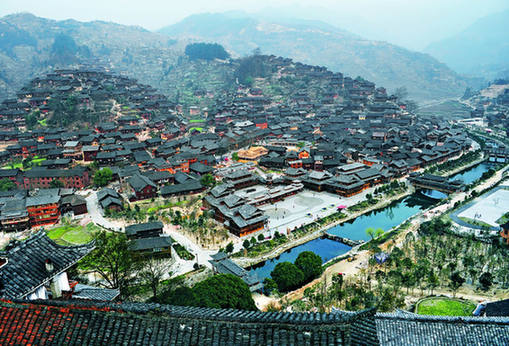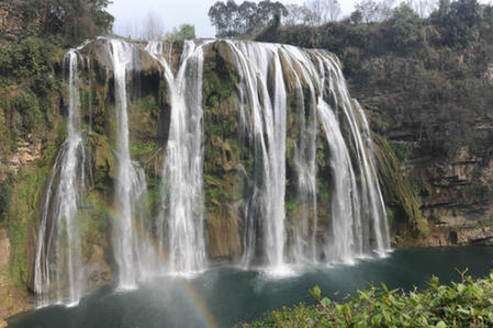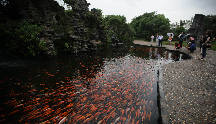The Spell of Guizhou: Nature and Culture
The Spell of Guizhou: Nature and Culture
By staff reporter DONG NING
Splendid landscape, pleasant weather and a multiplicity of ethnic groups contribute to the wealth of tourism resources in Guizhou Province in Southwest China. Guiyang, the provincial capital, is a noted summer resort. Located on the Yunnan-Guizhou Plateau, the province boasts many natural splendors and historic sites. Among the latter are the classic Red tourism attractions of the Zunyi Conference site and Xifeng Concentration Camp where captured CPC members were imprisoned by the Kuomintang. The majestic Huangguoshu Waterfalls are known as the "No.1 Waterfalls in China," and Tianxing Bridge Scenic Area has been described as a "natural bonsai garden." Xijiang Miao Village has over 1,000 families of that ethnic group and is the largest Miao community in China. Descendants of Ming Dynasty (1386-1644) garrison soldiers have faithfully observed their Tunpu culture and customs, and their Tunpu opera has been dubbed "a living fossil of Chinese opera." To these must-see delights should be added the mouth-watering local snacks and intoxicating Moutai spirit. People tend to tarry in Guizhou, held there by its scenic beauty and equally attractive culture.
 |
|
Xijiang Miao Village is the largest community of the Miao minority in China. Gong Xixiang |
 |
|
Huangguoshu Waterfalls. Zeng Ping |
 |
|
Site of the Zunyi Conference. Wang Song |
Services
Economy
- Eco-agriculture and Eco-tourism Power Nanchang’s Green Development
- Balance Environmental Protection and Economic Prosperity – Nanchang Looks to European Technology for Green Development
- Sustainable Growth Requires Wiser Energy Use
- Chinese Economy: On the Path of Scientific Development
- China's Economy over the Last Ten Years

